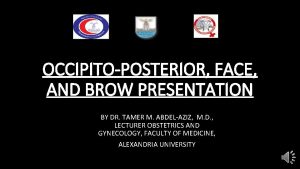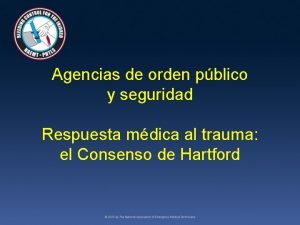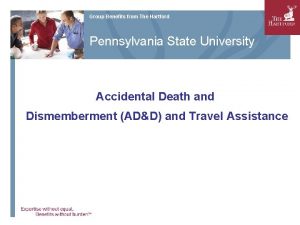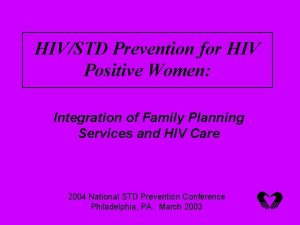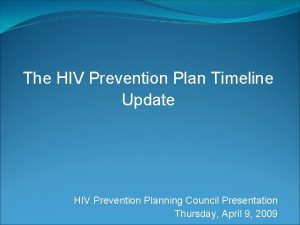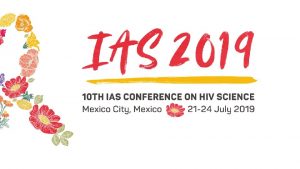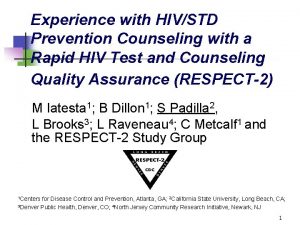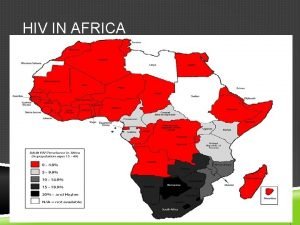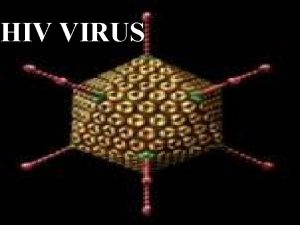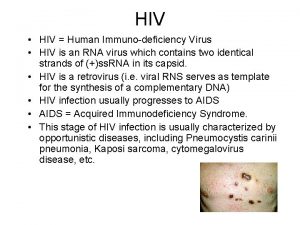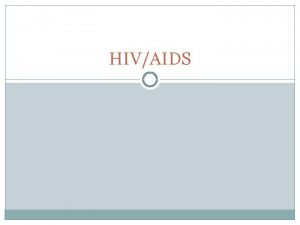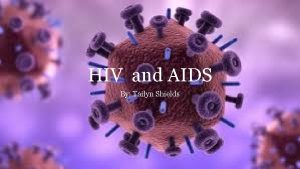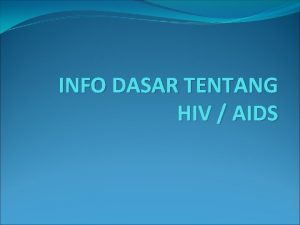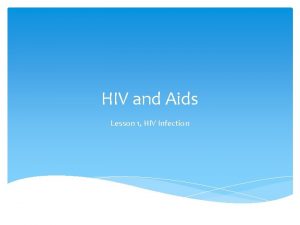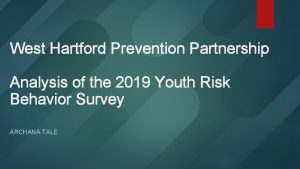Engaging Youth in HIVSTD Prevention Hartford Youth HIV


















- Slides: 18

Engaging Youth in HIV/STD Prevention Hartford Youth HIV Identification & Linkage (HYHIL) Model Nilda Fernandez, LMSW Danielle Warren-Dias, MSc. December 1, 2015

In Recognition of World AIDS DAY

Connecticut Children’s Medical Center

Office of Community Child Health Vision ● Be a community resource and a national leader in addressing critical health needs and challenges of children on the local, regional, state, national and global levels ● Have a strong record of developing, supporting, and spreading innovative programs Approach ● Strengthening Programs - Evaluation tools - Access to resources ● Leveraging synergies across programs - Best practices -Promoting partnerships ● Incubating new innovations

Hartford Youth HIV Identification & Linkage Consortia Mission To prevent the transmission of HIV and sexually transmitted infections (STIs) among youth through innovative outreach and preventive education, to enhance youth-focused HIV/STI screenings in collaboration with community agencies, to identify HIV/STI positive youth and link them into care, community resources and employment/career services.

History of HYHIL ● In 1999 Identified Needs: ● Collaboration ● Advocacy ● Improve health outcomes for youth affected HIV Disease ● Got out of AIDS in order to prevent AIDS ● Community engagement ● Convened roundtable discussions ● Secured seed funding ● Established the Hartford Youth HIV Identification & Linkage Consortium

Vulnerable Populations Served 10 million new yearly STD infections among 13 -24 year olds which are surrogate markers for future HIV infections 2013 CT STD cases reported: Chlamydia – 68% among 15 -24 year olds Gonorrhea – 49% among 10 -24 year olds Syphilis – 30% among 20 -24 year olds There are 10, 637 current cases of HIV in CT as of 2013 33% Black 32% Hispanic 28% of new HIV cases in 2013 were 20 -29 year olds 6% of new HIV cases in 2013 were under 20 CT ranked 7 th in AIDS cases Cost Effective - $16 Billion in health care costs/year 7 Information from: State of CT DPH and Center for Disease Control & Prevention

HYHIL Partners/Supporters AIDS Connecticut Capital Area Substance Abuse Council Central CT Area Health Education Center Charter Oak Health Center City of Hartford Health & Human Services Community Health Services of Hartford Community Renewal Team Connecticut Children’s Medical Center Connecticut Department of Public Health CT Kids Counsel Connecticut Women’s Education and Legal Fund Greater Hartford Ryan White Planning Council Latino Community Services Hartford Gay and Lesbian Health Collective Hispanic Health Council San Juan Center, Inc. Southside Institute Neighborhood Alliance The Mobile CPR Project (PENN Medicine) Trinity College UConn Health Center UConn School of Social Work

Health Interactive Project (HIP) • Targeted Intervention to students in schools with School-based Health Centers • Stop AIDS Mobile Theater Presentations • 40, 000 students received preventive education • Health Screenings in school settings: ~3000~HIV tests ~3200~ STD tests • 1 HIV Positive (MSM) • 1 Positive – HIV & Syphilis • 1 newly diag. linked to Care • 10% positivity rate for Chlamydia • Seeing increase of GC

Core Elements 1) Collaboration ● Engage other stakeholders (youth, community, CBOs) ● Leveraging Resources/funding ● Innovative, Holistic approach to prevention 2) Outreach ● Raise awareness ● Prevent new transmissions ● Advocacy 3) Early Detection of HIV/STI ● Improved health outcomes for youth

Core Elements 4) Linkage to Care and Community Resources • Medical Case Management, Mental Heath • Employment, Education 5) Structural Components: • • • Lead Agency Sustainability (Creative Strategies for Funding) Blending administrative resources among collaborators

Collaboration is Key… “Alone we can do so little; together we can do so much, ” Helen Keller Images Courtesy of Clara Acosta Glynn, LCSW and CCMC Corporate Communications

Diffusion of the HYHIL Model ● 5 Core Elements are adaptable ● Technical Assistance Collaboration drives Innovation ● ● Social Impact ● ● Vulnerable Groups Business success based on collaboration - “…Coordinate efforts across public health and health care system is beyond disease siloes. ” Julie Scofield, Executive Director, NASTAD

Process of Diffusion Local Dissemination: • Ryan White Care Act- Parts A, B, D & Planning Consortium Connecticut Dissemination: • CT HIV/AIDS Identification & Referral Task Force • New England HIV Implementation Science Network 2 nd Annual Symposium National Reach: • The White House’s Office of National AIDS Policy - National Women & Girls HIV/AIDS Awareness Day International Reach : • XIV International AIDS Conference, Barcelona, Spain 2002 • International Association for Social Workers in Group Symposium 2015 • OMICS 3 rd International HIV, STD, STI Conference 14

Challenges and Success Challenges: Coordination –Lead Agency Getting Buy-in from stakeholders Successes: Pooling Resources Effective Advocacy Overcoming Territorial Effective: Reached over 40, 000 youth Ahead of our time Shared Best Practices Advocacy Evidence Informed Approach of Prevention Sustainability

Purpose of the Consortia: Go beyond AIDS to prevent AIDS Collaboration ● Pooling of Resources Social Impact • Getting to Zero AIDS Free Generation

Resources ● http: //store. samhsa. gov/shin/content/SMA 14 -4884. pdf ● www. Womenshealth. gov ● www. Womens. Law. org ● www. hhs. gov/ash/oah ● www. plannedparenthood. org ● www. NASTAD. org ● www. Hartford. gov ● National Resource Center on Domestic Violence ● www. nrcdv. org

Thank you! Gracias! Follow HYHIL @ connecticutchildrens. org FB: Get. Tested/HYHIL Twitter: HYHIL
 Primary prevention secondary prevention tertiary prevention
Primary prevention secondary prevention tertiary prevention Global hiv prevention coalition
Global hiv prevention coalition Stakeholders in hiv prevention
Stakeholders in hiv prevention Marketing involve engaging directly with carefully targeted
Marketing involve engaging directly with carefully targeted Occipito-posterior
Occipito-posterior Engaging dynamics
Engaging dynamics Marketing involve engaging directly with carefully targeted
Marketing involve engaging directly with carefully targeted Saps sandton
Saps sandton Urban and craig nomogram
Urban and craig nomogram Hartford
Hartford Scott thumma
Scott thumma Movie theater new hartford ny
Movie theater new hartford ny Hartford webtpa
Hartford webtpa Respuesta
Respuesta Started an all-female academy in hartford, connecticut.
Started an all-female academy in hartford, connecticut. What is the capital of new york
What is the capital of new york The hartford safe haven program
The hartford safe haven program Greater hartford association of realtors
Greater hartford association of realtors Hartford funds media replay
Hartford funds media replay




